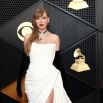Today marks the 75th birthday of Bugs Bunny, one of the biggest cartoon characters in history. He serves as the Mickey Mouse of the Warner Brothers empire, starring at the fore of Looney Tunes. Although Bugs has focused most of his talents in the forms of television, film and comedy, he's also got pretty nuanced taste in music. Here are five examples where the world's most famous rabbit—er, rabbit—delved into music.
Side note: It's also Billboard's 75th birthday today, so we wish the godfather of chart-keepers a happy birthday as well. But we write about them almost all of the time.
A Corny Concerto (1943)
It seems kind of unfair to compare the illustrated worlds of Walt Disney and Warner Brothers, even today. Disney was out the door much more quickly with Mickey Mouse and his range of pals, and the studio's experience with full-length animated features put them at an advantage. It's hard to imagine that Disney released Fantasia the same year that Bugs Bunny was created. That said, despite the obvious artistic genius of Fantasia, that Warner animators weren't above mocking it. This pair of cartoons, featuring music from Johann Strauss, "Tales From The Vienna Woods" and "The Blue Danube," as well as Tchaikovsky's first piano concerto. The eight-minute short is arranged to mimic Fantasia's arrangement, with Elmer Fudd serving as the emcee, much like Deems Taylor did in the Disney film. You can see how much has changed since the '30s: The first skit features none other than Porky Pig hunting Bugs (not Fudd), while the second features a prototype for Daffy Duck protecting a family of swans. The short was later named the no. 47 best cartoon ever by historian Jerry Beck.
The Rabbit of Seville (1950)
By 1950, Bugs had been adopted as the most prominent character on Looney Tunes and the legendary Chuck Jones had taken over as director. One of his most famous episodes was The Rabbit of Seville, which featured the most famous pair of foes in the show's history: Bugs Bunny and Elmer Fudd. For some reason, Fudd is hunting wabbits in Los Angeles, which is how he ends up chasing Bugs in the famous Hollywood Bowl. At that point in history, it wasn't rare for the Bowl to show operas, and apparently it was prepared to show Gioachino Rossini's The Barber of Seville. The chase results in a less-than-seven-minute performance of the opera, including the famous scene where Bugs takes the role of the barber and rubs Fudd's head with his ears and lathers him up. The episode is also acclaimed for Carl Stalling's ability to crunch the whole score into one succinct run (that ability will be noted in the next entry as well). This 'toon has also gone down in animation history, ranked no. 12 all time by Beck.
What's Opera, Doc? (1957)
Jones had a legendary run with Looney Tunes, so he had no need to follow the themes of previous successes. That said, as an orchestral music fan, the director chose to revisit the opera theme for What's Opera, Doc?, which would also become one of the most famous cartoons in history as well. Once again, Fudd is chasing Bugs, but this time there's no stage required: The pair weave the music and plot of Richard Wagner's "Ring Cycle." Much of the music is focused on the second opera in the trilogy, Die Walküre ("The Valkyrie"), as well as the thematic imagery, such as the famous viking helmet and winged helmets. Anyone can recognize the famous "Ride of The Valkyries" movement from its use across Western media, and almost anyone will recognize the scene where Fudd sings along with the famous theme: "Kill the wabbit, kill the wabbit, kill the wabbit!" Once again, Stallings deserves credit for summarizing such a huge cycle of music into one, smooth short without a hitch. This cartoon has been named the greatest of all time, both by Beck and a body representing more than 1,000 animators.
Baton Bunny (1959)
Bugs returns to The Hollywood Bowl, although not running away from a hunter this time. he's been hired to conduct the The Warner Bros. Symphony Orchestra. The gag is a simple one with hilarious complications: A fly is bothering Bugs, which leads him to resort to dramatic methods to get rid of it (one can only imagine how the erratic movements of the conductor might confuse an actual orchestra). The short features the orchestra playing Franz von Suppé's "Ein Morgen, win Mittag und Abend in Wien" (A Morning, Noon and Night in Vienna). This episode may be more notable for what the audience doesn't here however: It's only the second time in Looney Tunes history where Bugs doesn't say a word. The first? A Corny Concerto.
"Space Jam" by the Quad City DJs
What, did you expect everything in this list to be orchestral? Sorry to disappoint! Looney Tunes made a grand return during the '90s when Michael Jordan signed on for Space Jam, an absurd and excellent tale of how Bugs, Daffy, Porky and the rest of the Looney Tunes universe had to play a basketball game against some genetically-modified(?) aliens in order to prevent themselves from becoming enslaved. This was a movie set in the '90s and largely about basketball...unfortunately, Strauss wasn't going to fly from the soundtrack. Among the more urban selections on the Space Jam soundtrack were R. Kelly's "I Believe I Can Fly" and the title-track, by the Quad City DJs. Bugs, Jordan and the rest of the gang make an appearance in the music video. Although Looney Tunes has always featured wink-and-nod jokes for adults, we're surprised that Warner Brothers was comfortable with some of the suggestive dancing in this video.
© 2025 MusicTimes.com All rights reserved. Do not reproduce without permission.




